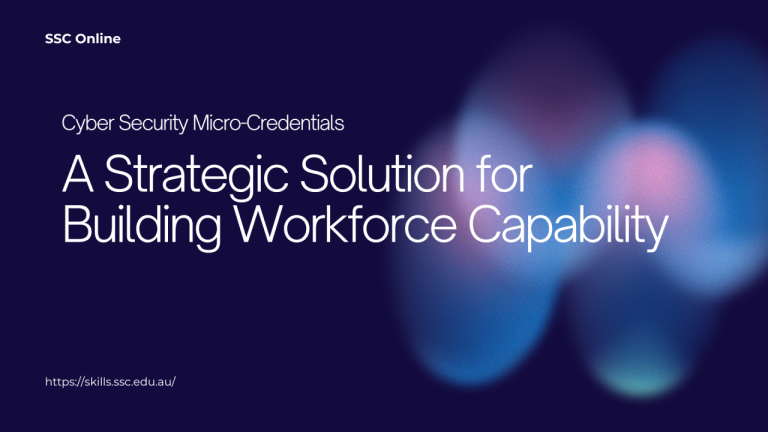Why Cyber Security Risk Management Is a Strategic Priority
Cyber security has evolved from a purely technical field into a core element of organisational strategy. Business continuity now depends not just on network performance but on an organisation’s ability to identify, evaluate, and manage cyber risks.
Cyber risk management is not about eliminating all risk. Instead, it focuses on making informed decisions that balance operational needs with potential threats. This approach draws from both technical and strategic domains and requires collaboration across IT, legal, compliance, and leadership teams.
When embedded effectively, risk management becomes a cultural discipline, not a compliance checkbox.
Why It Matters: The Cost of Inaction
The consequences of unmanaged cyber risk are significant. From ransomware and data theft to insider threats and supply chain attacks, organisations face:
- Operational disruption
- Regulatory penalties
- Loss of customer trust and investor confidence
In Australia, increasing regulatory pressure, national digital reliance, and public expectations are pushing cyber resilience to the top of boardroom agendas.
Cyber risk is now a leadership issue. Executives are being held accountable for proactive risk governance, making skilled professionals who can operate at the intersection of IT, compliance, and business continuity more valuable than ever.
A Structured Approach to Risk Management
Most risk management frameworks follow a similar lifecycle. Key stages include:
- Asset Identification Know what digital assets exist, where they are, and how they are used.
- Threat Assessment Understand the range of possible adversaries, from external attackers to insider misuse.
- Vulnerability Analysis Identify system weaknesses that threats could exploit.
- Risk Evaluation Assess the likelihood and impact of threats, then prioritise.
- Treatment Planning Decide how to mitigate, transfer, accept, or avoid each risk.
- Control Implementation Put technical and procedural safeguards in place, from encryption to user training.
- Monitoring and Review Continuously track risks, adjust controls, and review based on system changes or incidents.
This lifecycle supports proactive governance, better incident response, and stronger regulatory readiness.
Standards and Frameworks That Guide Risk Management
To operationalise risk management, many organisations rely on international and national standards, such as:
- ISO/IEC 27005 – for information security risk management
- NIST Cybersecurity Framework – widely adopted globally
- Australia’s Essential Eight – prioritised controls for common threats
These frameworks offer more than just technical guidance. They:
- Enable alignment across departments
- Support board-level reporting
- Help meet compliance and audit requirements
Managing Third-Party and Supply Chain Risks
A growing portion of cyber risk stems from external vendors and partners. Outsourced IT services, SaaS platforms, and cloud providers all introduce potential vulnerabilities.
Effective third-party risk management includes:
- Vendor security due diligence during onboarding
- Regular reviews of access and practices
- Incident notification and response expectations
Security must extend beyond your internal perimeter. These controls are increasingly critical for compliance with Privacy Act, APRA standards, and critical infrastructure regulations.
Staying Ahead of Emerging Threats
As organisations adopt AI, cloud services, and distributed work models, the threat landscape shifts.
- AI risks include deepfakes, automated phishing, and adversarial ML
- Cloud computing requires clarity around shared responsibility for access controls, data handling, and configuration
Cyber risk management must evolve in step, combining technical awareness with governance clarity. Success depends on understanding new technologies and how they impact both risk and compliance.
Regulatory Obligations and Executive Accountability
Australian organisations now face increasing obligations under:
- The Privacy Act
- The Notifiable Data Breaches scheme
- The SOCI Act (for critical infrastructure)
- APRA CPS 234 (for regulated financial services)
These frameworks demand:
- Assigned responsibility for cyber risk
- Clear reporting structures
- Documented mitigation plans
Compliance is no longer optional. It is central to strategic risk planning, business resilience, and executive accountability.
Human Factors and Security Culture
Human error remains one of the most common causes of security incidents.
Effective organisations invest in:
- Ongoing cyber awareness campaigns
- Contextual, role-based training
- Culture building led by senior management
Executives and team leaders must model secure behaviours. Embedding security into daily operations fosters a shared sense of responsibility, making cyber risk management an organisation-wide discipline.
Insider Threats, Incident Response, and Sector-Specific Risks
Cyber risk isn’t limited to external actors. Insider threats—whether intentional or accidental—can cause just as much damage.
Key controls include:
- Behavioural monitoring
- Privileged access restrictions
- Collaboration between IT, HR, and compliance teams
Meanwhile, business continuity planning and incident response protocols are essential for limiting the impact of unavoidable events. These plans should include:
- Roles and responsibilities
- Recovery objectives (RPO/RTO)
- Regular tabletop exercises
Industry-specific contexts also matter:
- Healthcare requires protection of patient records and compliance with the My Health Records Act
- Financial services must meet high standards under APRA and ASIC regulations
- Education and government must manage large volumes of personal data, often with legacy systems
Risk management must be tailored to each sector’s legal, operational, and reputational context.
Why Skills Development Matters More Than Ever
As the cyber risk landscape grows more complex, so does the need for ongoing professional development.
Traditional qualifications are valuable, but they may not keep pace with fast-changing threats or fit within a busy schedule. That’s where micro-credentials come in.
Micro-credentials offer:
- Short, focused training in skills such as risk assessment, incident response, or governance
- Stackable options that align with formal qualifications
- Flexible, self-paced delivery suitable for working professionals
SSC’s Role in Cyber Risk Education
At South Sydney College, our cyber security micro-credentials are:
- Aligned with nationally accredited units
- Delivered online for maximum flexibility
- Built around real-world workplace scenarios
Courses focused on cyber risk and governance help professionals and organisations build the competencies required for today’s threat environment.
This model also supports teams looking to scale internal capability, improve compliance, or support professional growth.
🔍 Explore Risk-Focused Cyber Security Training
Courses:
Broader Learning Options:
Flexible Monthly Subscription: South Sydney College offers a cost-effective subscription model that gives learners access to multiple accredited and industry-validated micro-credentials. This approach supports both individual development and enterprise capability building in areas such as cyber risk, compliance, and security operations.




